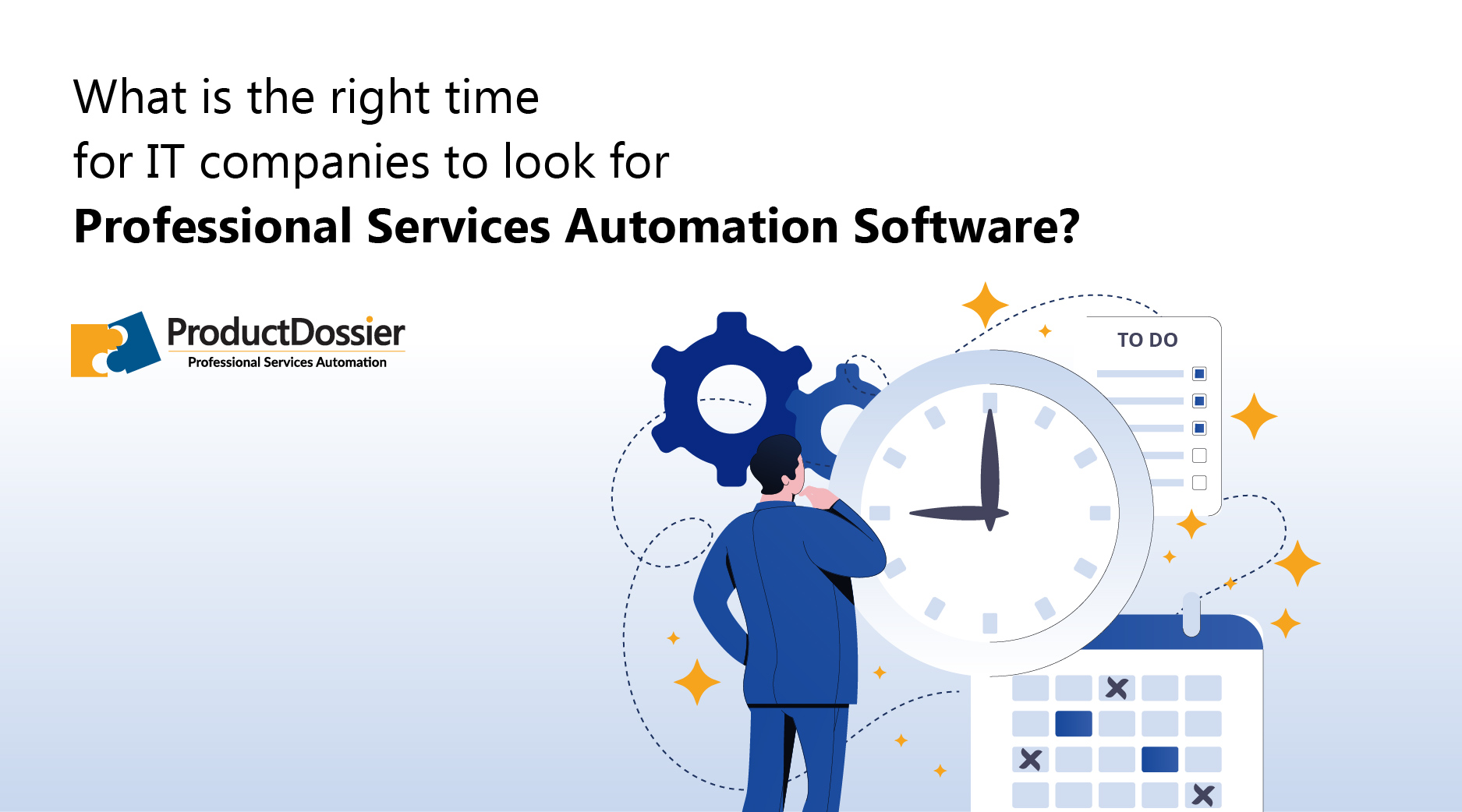| At a glance • Headwinds for the IT industry • What is PSA Software • Symptoms that indicate the need for digitalization and integration |
Is your company facing headwinds like tight customer budgets, stagnant employee productivity, and attrition? Is managing 100s or 1000s of talented people a challenge? You may have heard of Professional Services Automation (PSA) software as a tool to deal with the above business issues.
Is it time you deploy PSA software? But before that, what really is PSA?
A capable Professional Services Automation (PSA) software digitalizes all business processes like opportunity management, proposal building & bidding, resource planning, talent acquisition, resource allocation & timesheets, project planning & tracking, change request management, billing, project cost & profitability tracking, and project governance.
Such PSA software integrates with all your existing applications. The PSA software establishes seamless data flow across your organization. It enables collaboration and proactive decision-making.
Your organization has used software applications and spreadsheets. So far, you have done well.
But is now the time to assess if you need something more for the future?
If you see some of the symptoms given below in your organization, it means that you have outgrown your present solutions. You need to seriously consider a PSA solution for managing the entire opportunity-to-cash cycles of your projects.
Symptom #1 Project managers always complain about missing resources
Project managers in your organization are chasing your talent acquisition teams for resources. They are constantly shifting resources for billing purposes. Your customers are not happy with the allocated resources.
The proportion of new employees who have been brought in mid-way has gone up. All these are signs that your delivery teams are under severe stress.
Symptom #2 Talent acquisition teams stretched beyond their capacity
Talent acquisition teams are always peering at their monitors and are busy on their phones all the time. The upstream effects of stressed delivery teams are showing up here. Your talent acquisition teams are really stretched now.
Symptom #3 Submitting project bids on time seems like a hurdles chase
Your estimation group starts every time from scratch and configures projects making undocumented assumptions. Versions of project proposals are circulating between your sales and project estimation people. As the negotiations progress, changes required by customers are hurriedly incorporated.
The availability of resources is more of a hope than a realistic plan. Travel costs and indirect costs aren’t adequately factored in.
Approvals of important project bids need an unpredictably long time to get necessary approvals.
Symptom #4 Glaring gaps between hours booked in timesheets and hours billed
You find that your people have filled in timesheets but their work is not getting billed. There are serious gaps between hours worked and hours billed. It takes forever to reconcile these gaps.
Symptom #5 ‘As executed’ project costs are known only after closing them
You have no reliable and quick way of finding out ‘ start-to-date as executed’ costs while the project is running. You learn it all only after the project is closed. It is not possible to proactively manage costs.
Symptom #6 Handling of change requests by customers out of control
As projects progress, customers make changes. Your project managers and their teams incorporate the changes but they are not tracked. Billable and nonbillable change requests are not documented. You keep missing billable revenues. You also miss learning from the unbillable changes made in the projects.
Symptom #7 Managers and team leaders are busy reconciling spreadsheets
You see everyone bringing their own spreadsheets for a discussion. The first 15 to 20 minutes of every meeting get used in sorting out different versions of information before any decision can be made. There are no standard cost masters and it is difficult to update cost data across the organization.
Symptom #8 Employee morale going down
Your deal pipeline is good. The business looks good but your employees aren’t upbeat. Some are leaving and some are considering a move. There is more and more discussion on stemming employee attrition.
Experienced and highly skilled people are complaining about the low-level work that they have to do. New people don’t feel cared for.
There is no data available on the job performed by a resource over the period of his/her employment.
A good PSA solution gives such data. Decisions like training or job rotations can be made using such data. done. This can reduce attrition.
Symptom #9 Only sales and delivery teams use a ‘projects vocabulary’
‘Projects vocabulary’ has terms like proposals, project margins, negotiations, deal or order finalization, contract terms & conditions, deliverables, billing schedules, service levels, milestones, tasks, project planning, tracking, change requests, closing a project, as sold and as executed profits, etc.
Do all departments use this vocabulary? Are they aware of current issues that confront sales and delivery teams? Are they on the same page about the need for resources, resources on the bench, billing, and margins of projects?
If only sales and delivery teams are struggling and other departments are merely reacting to their demands, precious time and management capacity are being wasted.
You need to build a ‘projects culture’.
Do you see some of the above symptoms?
You need your organization’s systems to be fully integrated along the above project business processes to build a project culture. You need versatile, highly configurable, quick-to-implement, end-to-end Professional Services Automation software.
Ask for a demonstration of ProductDossier PSA. You probably won’t need to look further. Contact us at sales@productdossier.com




